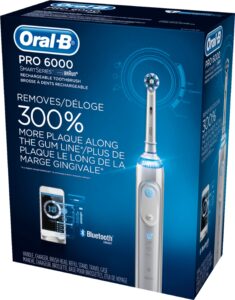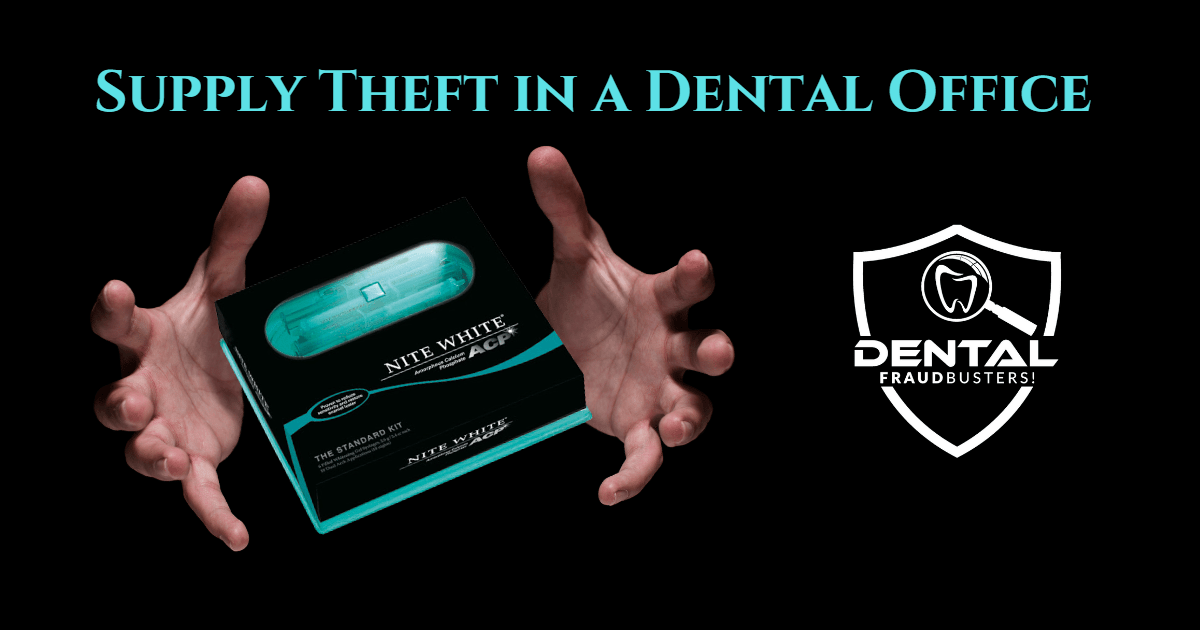Monitoring for supply theft in the dental office
February 2005
I remember this call. A local dentist phoned and said he still in was in his office and happened to look inside a patient chart and was stunned to see four crisp $100 bills neatly tucked inside. (paper charts back then)
He did not know it at the time, but his office manager previously placed the $100 notes in the patient chart with the intent to steal at a later time)
After finding this money, the doctor felt uneasy and knew that I was the local go-to-guy for embezzlement, so he call me and we agreed to meet in his office on the next day (a Sunday).
After I arrived I started examining his Dentrix software and bank records. In less than an hour, I had uncovered multiple clear and compelling examples of employee theft.
I told the practice owner that he needed to fire his manager, so the next day I went back to his office to help him confront office manager. The doctor and I met his office first, then we called the office manager in.
I confronted her with the allegations.
She denied everything.

She cried and then begged the doctor to let her keep her job saying “please don’t involve the police.”
I reminded her that this was not the time nor the place for any discussion, and that she had to leave immediately.
I opened the office door and walked her off the premises.
In the days after, I uncovered that during the four years she worked for the dentist, she stole over $50,000 (in 2005 dollars).
Yes, she was eventually charged, convicted, and sentenced to prison. (this was not her first felony). The court also ordered her to pay back what she stole, but I doubt the dentist ever received a penny.
This dishonest employee was also over-billing insurance companies for work that was not done and deleting computer records to hide her crime. But that’s not all….
See a Typo or an Error? Report it.
over 50 Oral B PROS were stolen as well.

Over the previous 12 months, she stole over 50 “Oral-B Professional” electronic toothbrushes. (about $4,000 in 2005 dollars).
She sold the Oral-B toothbrushes to patients for cash (and stole the money) and she gave them to her family as birthday and Christmas gifts.
She also stole thousands of dollars in whitening gels and kits.
How DID this happen?
Two ingredients were required:
#1 The office manager was responsible for ordering supplies and was able to order as many products as she wanted.
#2 The dentist did not check to see where the supplies went, he just paid the supply invoices when they were presented to him.
trackING supplies
Here’s an easy method to track the use of supplies that your office sells or gives away.
STEP 1:
Create a unique “product fee code” in your practice management software to record when you sell, or give away, products like NiteWhite, MI Paste, Biotene, Oral-B, Sonicare, and more.
(I recommend that you create fee codes beginning with “P” to designate products you sell or give away.)
Examples:
PMI = Product MI Paste
PNW = Product NiteWhite
PBT = Product Biotene Rinse
This will allow you to print a report of all products sold or given away each month by selecting a range fee codes from “PAAA and ending PZZZZ”
STEP 2:
Instruct your employees that each time a product is sold, or given away, it must be recorded (“billed”) in the patient ledgers.
All free products must be recorded, no exceptions.
When a product is sold, record it in the ledger at the regular fee. .
When a product is given away, record it in the ledger at $0.00. If your practice software allows entry of a ledger note (and most do), then record a brief note to say why the product was given free to the patient.
STEP 3:
At regular intervals (monthly or quarterly) print a report from your practice management software showing all the products that were recorded as sold or given away during a specific period.
From this report, count the number of each product sold or given away.
Compare the total products sold/given against the total number of products your office ordered from suppliers during the period. You’ll need to track your supplier’s invoices for this purpose.
Next, compare the beginning and ending supply count.
Example for the month of January:
Product: MI Paste
| Opening Count (Quantity on hand at Jan 1) | 12 |
| Quantity Purchased: | 40 |
| Quantity Sold (or given away): | 30 |
| Closing Count (Quantity on on-hand at Jan 31) | 10 |
| Unaccounted MI Paste (Missing) | 12 |
(Opening Count + Quantity Purchased ) – (Quantity Sold + Closing Count) = Unaccounted MI paste.
(12+40) – (30+10) = 12 = number of MI paste unaccounted for.
This is a much-simplified overview.
In your dental practice, it’s best to use a software app to manage your supplies and inventory. (e.g.: Quickbooks, Excel)
Report an Error or Typo.
If you see an error or spot a typo, please let me know.
Send your comments directly to Bill Hiltz using the form below.

